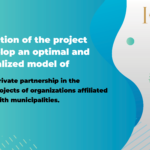Feasibility studies
Feasibility study is a research method, especially in engineering sciences and industrial management, which includes the following:
- The process of controlling and recognizing issues
- Identify goals, opportunities and threats
- Description of situations
- Recognition of income
- Identify costs
- Profit recognition
- Summary and analysis of a project
A feasibility study evaluates the potential of a project’s success, which is why impartiality is an important credit factor considered by investors and lending institutions when preparing for a feasibility study. Hence, it should be done purposefully and use an unbiased method to provide information on which decisions are made. Of course, the lending institutions or investors themselves cannot fully maintain neutrality conditions in all the studied cases, therefore, it is necessary for certified consultants to prepare feasibility studies.
Reasons for feasibility study
Some of the reasons for the necessity of this work are:
- Focus on the project and outline the options
- Limit business options
- Identify new investment opportunities during the review process
- Identify reasons for not implementing the plan
- Gathering sufficient and reliable information to make a decision
- Providing the documents that commercial activity studies have been done in that direction
- It helps to ensure the security of financial assistance (which we provide from lending institutions and other financial sources).
- Helping to attract investment in shares
» Feasibility study is a very sensitive and vital step in the business estimation process. If this step is followed correctly, it will guide you to achieve the best possible investment and will definitely provide you with the necessary knowledge to make the right decision.
Explanatory plan
It includes an overview of the project or business activity that they intend to start. Before starting any activity, considering the existing factors and conditions and examining them plays a fundamental role in the success and advancement of any business; Because any activity that starts without planning will be doomed to failure.
A justification plan may include the construction of a small manufacturing plant or a huge petrochemical plant, or increasing the capacity of a production line to the production lines of an existing plant, or establishing a welfare service company, or renovating and renovating a plant, or moving a plant. be
Five common factors in feasibility studies
The acronym Telos means five areas in feasibility, which include the following:
- technical
- economic
- legal
- operational
- timing
The feasibility report is used as a project charter to carry out the next steps.
Parts of a Feasibility Plan
- First part: Getting to know the plan and the company
- Second part: market studies
- The third part: technical studies and estimation of infrastructure facilities of the project
- The fourth part: financial studies including project investment estimate, production cost estimate and annual sales value of the project
- The fifth part: Financial forecasting and how to finance the plan
- The sixth part: determining the financial and economic indicators of the plan
Market studies: It is equivalent to the term Market Study, which studies and examines various aspects of the market for products or services predicted for the project, including supply, demand, target market, and other matters, and finally, the output of this section is the prediction of the future unmet need of the market. will specify
Technical studies: It is equivalent to the term Technical Feasibility, which in this section studies the various technical aspects of the project, including the technical knowledge used, capacity, execution location, required machinery and equipment, and its implementation structure.
Financial studies: based on the resulting information from the technical department, the total amount of fixed investment of the project, the working capital required for the project, the current costs during the operation period and the revenues will be determined.
Modeling the plan with Comfar software
 COMFAR stands for Computer Model for Feasibility Analysis and Reporting.
COMFAR stands for Computer Model for Feasibility Analysis and Reporting.
Financial analysis: It is equivalent to the term Financial Analysis, in which various financial and profitability indicators of the plan are obtained and analyzed using the information of the previous sections of the report and based on the principles and standards of engineering economics, and finally the output of this decision making section is It will be about whether or not a plan is justifiable.
Preliminary Feasibility Studies (PFS)
In the preliminary feasibility study, the general characteristics of the project are discussed and it is usually done when the investor is faced with several different options. In these studies, according to the dimensions of the project, attention is mainly paid to the following:
- Examining the reasons for choosing the plan
- Determining and analyzing the technical options of the project
- Determining and analyzing the options for the implementation of the project
- Determining and analyzing project technology options
- Determining and analyzing options for the project implementation method
- Determining and prioritizing the technical options of the project, consisting of options for the location of the project, technology options for the project, and options for the method of project implementation.
- Preparation of preliminary implementation schedule for different technical options of the project
- Financial and economic analysis of the project’s technical options
- Determining the rules governing how to measure project costs and revenues
- Estimating the costs of each of the technical options of the project based on the structure of the separation of quantitative and non-quantitative costs
- Estimating the income of each of the technical options of the plan based on the structure of quantitative and non-quantitative incomes
- Cost-income analysis and economic prioritization of the technical option of the project
- Analyzing the sensitivity of each option to price changes, extending the implementation period, changes in accessibility and the amount of production or services from different options, determining the degree of uncertainty of estimates and revising the economic prioritization of options.
- Examining the reasons for choosing the plan
- Estimating the quantitative costs and revenues of each of the technical options based on market prices, while considering the related taxes.
- Analyzing the sensitivity of estimates to changes in prices, lengthening the implementation period, changes in accessibility, the amount of production or services resulting from different options and determining their degree of uncertainty.
- Analyzing the sensitivity of estimates to changes in prices, lengthening the implementation period, changes in accessibility, the amount of production or services resulting from different options and determining their degree of uncertainty.
- Financial analysis of technical project options and their prioritization
- Social studies and evaluation of the effects and social consequences of each option
- Technical-economic and financial evaluation of different project options and their prioritization
Preliminary Feasibility Studies (PFS)
A feasibility study evaluates the potential for success of a project, which is why impartiality is an important credit factor considered by investors and lending institutions when preparing for a feasibility study. Hence, it should be done purposefully and use an unbiased method to provide information on which decisions are made. Of course, the lending institutions or investors themselves cannot fully maintain neutrality conditions in all the studied cases, therefore, it is necessary for certified consultants to prepare a feasibility study.
- Design location
- Determining the project location options in the selected place for project implementation
- Comparing and prioritizing different options for locating the plan and preparing a location selection report.
- Basic engineering studies and basic design
- Revision and completion of basic information and data related to atmospheric, geological and hydrological conditions of location, accessible infrastructure facilities for the plan, including water resources, energy resources, and human resources.
- Transportation systems, sources of supply of raw materials, raw materials and materials
- Basic engineering studies and raw material and process design
- Placement and arrangement of design units, systems and equipment
- Receiving the proforma and information from the licensor regarding preliminary engineering design including process engineering, preliminary design of systems and mechanical equipment, preliminary design of plumbing works, preliminary design of construction and infrastructure works, preliminary design of electrical systems and equipment, preliminary design of control systems and precision instruments
- Preparation of the list of major items of all units, systems and different parts of the plan, including the list of materials and their quantities, equipment and machines and tools used in the work
- Preparation of project schedule by project for engineering activities and services, procurement, procurement support, quality control, construction (including construction and installation operations), finance, equipping manpower for operation and start-up period
- Estimation of foreign currency and Rial investment costs of the project by project












